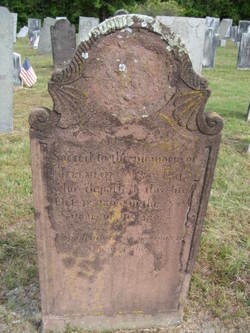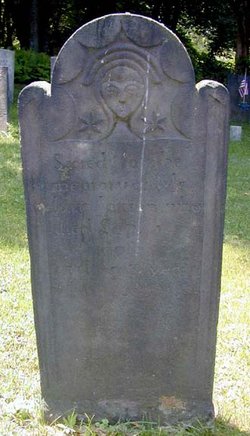America’s First Vampire Investigators
The Connecticut Courant article I quoted yesterday named three men in addition to Isaac Johnson, the paterfamilias so distraught by tuberculosis in his family that he had two of his children’s bodies dug up in 1784.
One was the man who wrote the article for the newspaper, attesting to what he saw. Moses Holmes (1727-1811?) was an important figure in Willington, Connecticut. He deeded to the town some of the land that became the common. Holmes held multiple public offices and had represented the town in the Connecticut state legislature starting in 1776.
Holmes mentioned two doctors who examined the remains of the corpses: “Doctors Grant and West.” I set out to identify those men and found them on the list of men who founded the Connecticut Medical Society in 1792.
One impetus for chartering such medical organizations was to differentiate their members from “quacks” (though, given the state of eighteenth-century medicine, I’m not sure quacks were necessarily worse for patients than establishment doctors). Holmes’s letter likewise complained about a “Quack Doctor.”
The first of the two doctors at the exhumation was Miner (or Minor) Grant (1756-1828) of Willington. He appears to have been more of an apothecary than a surgeon, and is remembered for the shops he ran. The one in Willington, built in 1797, is now a private residence near the center of the town. Another he built for his son in Stafford in 1802 has been moved to Old Sturbridge Village—which means that outdoor museum can say it owns a building constructed for one of America’s first vampire investigators.
The other doctor was Jeremiah West (1753-1806, gravestone shown above) of Tolland, the larger town to the west of Willington. West graduated from Yale College in 1777, served as a Continental Army surgeon during the Revolutionary War, might have taken a little more training in Boston, and settled in Tolland shortly before the exhumations.
J. R. Cole’s 1888 History of Tolland County quoted an unidentified source saying:
Thus, when Dr. Miner Grant and Dr. Jeremiah West came to witness the exhumation of the Johnson children, and Moses Holmes added his own observations about their graves and reported all that to the Courant in New Haven, that was the Willington authorities assembling to make a strong statement about the idea of vampirism. They didn’t like it. They wanted to stamp out that false belief before it spread.
But we know that didn’t work. There are scores of reports of similar exhumations from New England in the nineteenth century, with a bit of archeological evidence as well. At the S.H.E.A.R. panel I attended last summer, Michael Bell theorized that the persistence of that practice despite legal and print hostility means it was periodically reinvigorated with new believers from Europe. But we can trace the roots of the belief in America back to right after the Revolutionary War.
TOMORROW: Vampire vocabulary.
One was the man who wrote the article for the newspaper, attesting to what he saw. Moses Holmes (1727-1811?) was an important figure in Willington, Connecticut. He deeded to the town some of the land that became the common. Holmes held multiple public offices and had represented the town in the Connecticut state legislature starting in 1776.
Holmes mentioned two doctors who examined the remains of the corpses: “Doctors Grant and West.” I set out to identify those men and found them on the list of men who founded the Connecticut Medical Society in 1792.
One impetus for chartering such medical organizations was to differentiate their members from “quacks” (though, given the state of eighteenth-century medicine, I’m not sure quacks were necessarily worse for patients than establishment doctors). Holmes’s letter likewise complained about a “Quack Doctor.”
The first of the two doctors at the exhumation was Miner (or Minor) Grant (1756-1828) of Willington. He appears to have been more of an apothecary than a surgeon, and is remembered for the shops he ran. The one in Willington, built in 1797, is now a private residence near the center of the town. Another he built for his son in Stafford in 1802 has been moved to Old Sturbridge Village—which means that outdoor museum can say it owns a building constructed for one of America’s first vampire investigators.
The other doctor was Jeremiah West (1753-1806, gravestone shown above) of Tolland, the larger town to the west of Willington. West graduated from Yale College in 1777, served as a Continental Army surgeon during the Revolutionary War, might have taken a little more training in Boston, and settled in Tolland shortly before the exhumations.
J. R. Cole’s 1888 History of Tolland County quoted an unidentified source saying:
In stature, Dr. West was full six feet, with a large and well proportioned frame. He became exceedingly corpulent during the latter part of his life, and is represented as being unusually large and heavy. Tradition says that he weighed about three hundred and fifty pounds, and that his step as he walked seemed to shake the ground. In social life he was cheerful, humorous and pleasant.All three of these men—Holmes, Grant, and West—were politically active. In fact, they would all serve in the Connecticut house in 1786, a couple of years after the exhumation. Dr. West later participated in the Connecticut ratifying convention for the U.S. Constitution.
Thus, when Dr. Miner Grant and Dr. Jeremiah West came to witness the exhumation of the Johnson children, and Moses Holmes added his own observations about their graves and reported all that to the Courant in New Haven, that was the Willington authorities assembling to make a strong statement about the idea of vampirism. They didn’t like it. They wanted to stamp out that false belief before it spread.
But we know that didn’t work. There are scores of reports of similar exhumations from New England in the nineteenth century, with a bit of archeological evidence as well. At the S.H.E.A.R. panel I attended last summer, Michael Bell theorized that the persistence of that practice despite legal and print hostility means it was periodically reinvigorated with new believers from Europe. But we can trace the roots of the belief in America back to right after the Revolutionary War.
TOMORROW: Vampire vocabulary.


